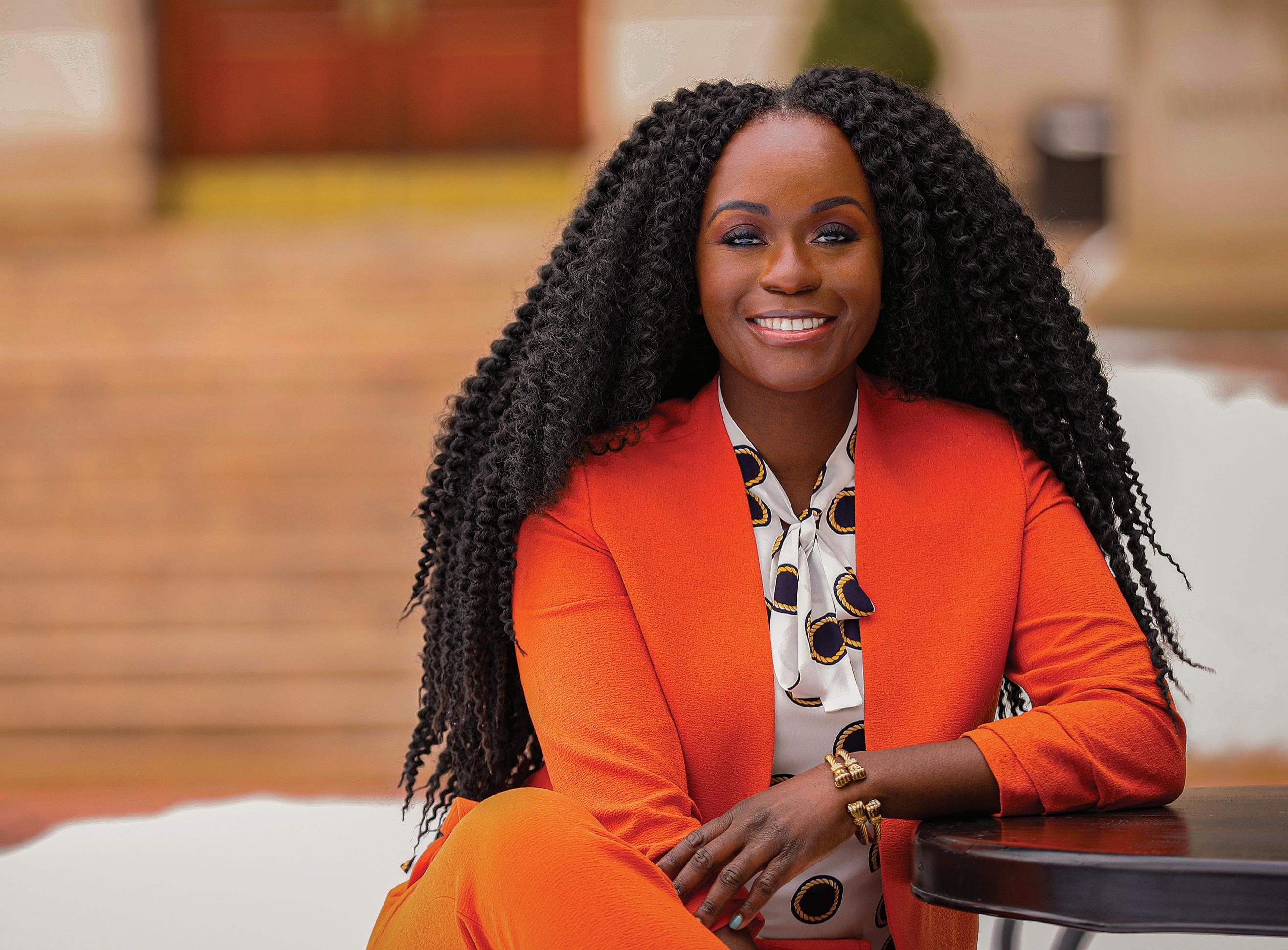LAS T WO R D |
PEGEEN HOPKINS
A Lasting Tradition
The process of preparation and getting ready to present is a big benefit. I call it “the transformation.” In the first couple of weeks,
Seton Hall’s Petersheim Academic Exposition — where the
you can see students’ resistance to the idea.
University honors the best in academic achievement — got
But as time goes on, they get more invested, making sure
its start 25 years ago. The annual week-long celebration
they get everything right. Most importantly, they come
draws from undergraduate and graduate work at all
away from the process with tangible work — a research
three University campuses and includes research sympo-
abstract, poster and publishable manuscript. Many of
siums, poster sessions, presentations, panel discussions,
them never thought that as undergraduates they would
theatrical performances, art exhibits, debates and concerts.
have a publishable manuscript prepared. But they do.
Named after an innovative associate professor of biochemistry who passed away soon after launching the event, the expo provides students with a taste of scholastic rigor and presentation. Seton Hall magazine editor Pegeen Hopkins talked to Sulie L. Chang, a biology professor and co-chair of the expo’s steering committee, to learn more.
What was one of the most memorable of the student presentations over the years? One thing that’s important are the topics, which can deal with subjects such as alcoholism, drug addiction, cancer. But a couple of students come to mind. One was Xin Yu, a graduate student from China — he was so determined. When anyone would pass by him, he would ask, “Can I
How did the expo get started?
present this to you?” to practice. Now, he’s a top scientist
In 1996, Matthew Petersheim saw that our campus had
in functional MRI at Massachusetts General Hospital.
many nonacademic celebratory events for students —
There was also Rachel Montel, a Ph.D. student in mo-
gatherings for sports or theater. But it didn’t have any
lecular bioscience. She presented her own idea at the
such events for academics or research. So, he reached
expo, rather than a professor’s suggestion, and won two
out to student affairs to get financial sponsorship for
awards. She’s now at Weill Cornell medical school as a
an exposition.
postdoctoral associate.
Not long after, he was diagnosed with a brain tumor. He was so integral to the event’s development, I wondered if the initiative would continue if he got very sick. He told me: “Don’t worry. I will continue doing the expo.” He did, for as long as he could. After he passed away, we lobbied faculty senate to have the event named after him.
What was Professor Petersheim like? This story gives a good idea of the kind of person he was:
How has the expo been evolving? We recently introduced a travel award so that the students who give the top presentations at our expo can travel to academic conferences — locally, nationally or internationally — to present their work. There’s an award for each program. This allows students to share their research and network with scholars and researchers in their fields. Also, many groups have brought in top-level speakers
I was new to Seton Hall. We had never been introduced,
to present to students. In 2017, Dr. Kamel Khalili, who
but his laboratory was near mine. I had young children
some say will eventually cure HIV, came to speak about
then, and I always had my two daughters come and
using the CRISPR-technique to remove the HIV gene
sit outside my lab. Because of their age, they were not
from the genome of the patients. The following year,
allowed inside for safety reasons. So, they would wait
Dr. David Goldman, the clinical director of NIAAA came
for me in the hallway, sitting on the floor. One day, he
to talk about how genetics explains our behavior. The
carried a big, long wooden bench over and told them,
expo continues to grow and transform.
“Now you can sit here, on this bench.” 44
What concrete benefits do students get from participating in the expo?
Visit www.shu.edu/petersheim for more information. n








